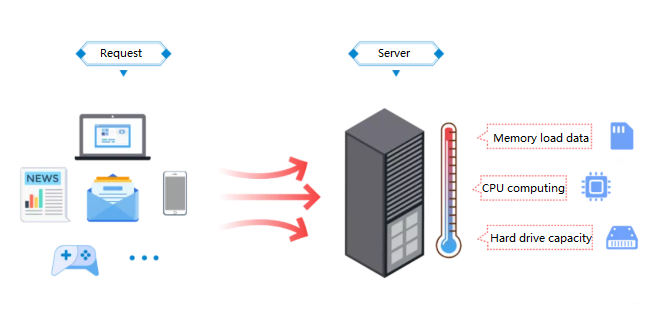Server Crash
What is a server crash?

Definition:
A server crash refers to the sudden and unexpected failure of a computer server, resulting in the interruption or loss of services it provides. Servers are critical components of IT infrastructure, responsible for hosting websites, storing data, managing networks, and running applications. A server crash can occur due to various reasons, including hardware failure, software issues, power outages, or malicious attacks.
Analogy:
Imagine a server as the heart of a complex network, pumping data and services to various parts of an organization. A server crash is akin to a sudden cardiac arrest, halting the flow of information and services, and requiring immediate intervention to restore functionality and prevent further damage.
Further Description:
Server crashes can manifest in different forms, ranging from minor disruptions to catastrophic failures, depending on the severity and underlying causes. Common symptoms of a server crash include unresponsive websites, error messages, data corruption, and loss of connectivity.
Causes of Server Crashes:
Hardware Failure: Components such as hard drives, memory modules, power supplies, and cooling systems can fail due to wear and tear, overheating, or manufacturing defects.
Software Issues: Operating system errors, incompatible drivers, bugs, and software conflicts can destabilize server environments, leading to crashes and system instability.
Power Outages: Sudden power surges, outages, or fluctuations can disrupt server operations and cause hardware damage or data loss if proper backup measures are not in place.
Malicious Attacks: Cyberattacks, including viruses, malware, ransomware, and distributed denial-of-service (DDoS) attacks, can compromise server security, disrupt services, and cause system crashes.
Impact of Server Crashes:
Downtime: Server crashes result in downtime, causing disruption to business operations, loss of productivity, and potential revenue loss, especially for e-commerce websites and online services.
Data Loss: Depending on backup strategies and recovery procedures, server crashes can lead to data loss, compromising critical business information, customer records, and intellectual property.
Reputation Damage: Persistent server crashes can damage the reputation of an organization, eroding customer trust and confidence in its ability to deliver reliable services.
Financial Costs: Repairing or replacing damaged hardware, restoring data from backups, and addressing security vulnerabilities incurred financial costs for organizations affected by server crashes.
Prevention and Mitigation Strategies:
Regular Maintenance: Implementing routine hardware inspections, software updates, and system optimizations to prevent potential failures and ensure server reliability.
Redundancy and Failover: Deploying redundant hardware, power supplies, and network connections, along with failover mechanisms and backup systems, to minimize downtime and data loss in the event of a server crash.
Security Measures: Implementing robust cybersecurity measures, including firewalls, intrusion detection systems, antivirus software, and data encryption, to protect servers from malicious attacks and unauthorized access.
Key Takeaways:
- A server crash refers to the sudden failure of a computer server, disrupting services and potentially causing data loss.
- Causes include hardware failure, software issues, power outages, and malicious attacks.
- Impacts include downtime, data loss, reputation damage, and financial costs.
- Prevention strategies include regular maintenance, redundancy, failover mechanisms, and robust security measures.
- Examples of server crashes include website outages, database failures, and network disruptions affecting businesses and organizations worldwide.




